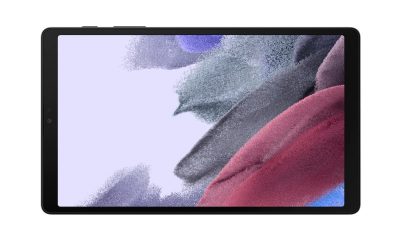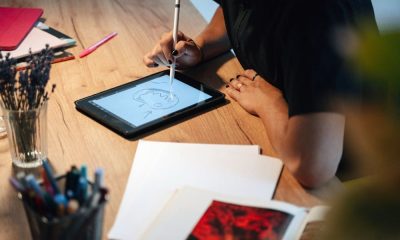Business
8 Best Machine Learning Tools For Data Scientists
Published
2 years agoon
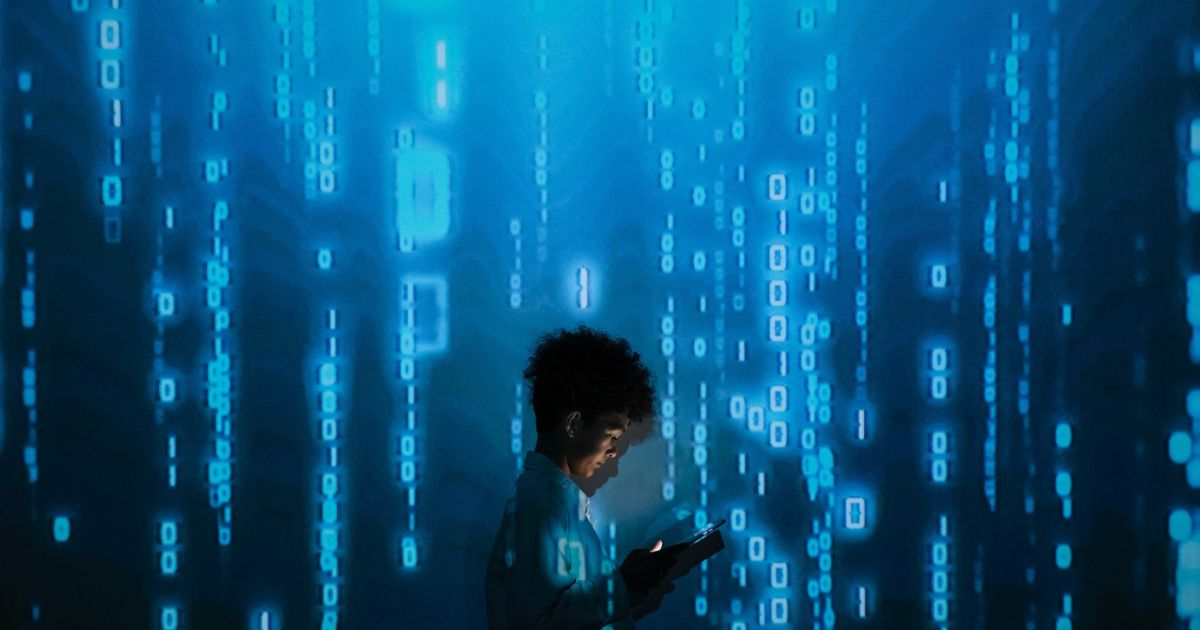
Machine learning (ML) has changed how humans interact with machines, technologies, and data. What started as a niche industry has now grown into a billion-dollar market. ML is already part of several industries, including healthcare, manufacturing, finance, retail, and entertainment. It has become crucial for this business to embrace machine learning to increase revenue, cut costs, and automate operations.
Netflix saved $1 billion because of its ML algorithm for the combined effect of content recommendations and personalization. And 65% of companies planning to adopt machine learning say the technology will help them in decision-making.
This article will feature the eight best machine learning tools for data scientists in any industry.
1. Pandas
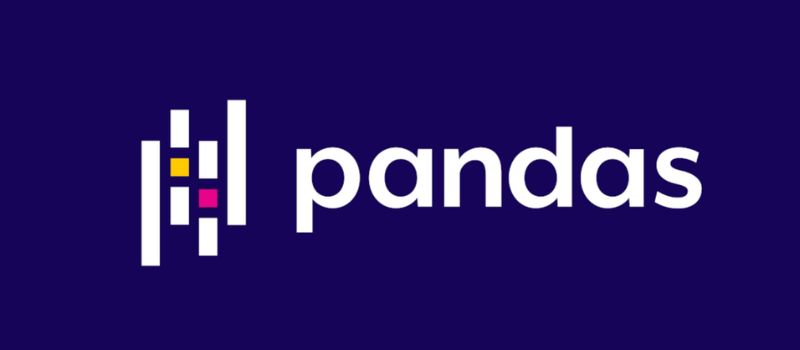
Pandas is an open-source data manipulation and analysis library for Python. It provides easy-to-use data structures and analysis tools for handling structured data, like tabular or time series data. With Pandas, data scientists can perform various tasks such as data cleaning, exploration, aggregation, and visualization.
Pros:
- Built for Python:
- Excellent representation of data
- Less coding done, more work accomplished
- Efficient handling of massive data
- Extensive feature set
- The flexibility of data and easy customization
Cons:
- It has a complex syntax that is not always compatible with Python
- Steep learning curve
- Poor documentation
- Poor 3D matrix compatibility
2. NumPy
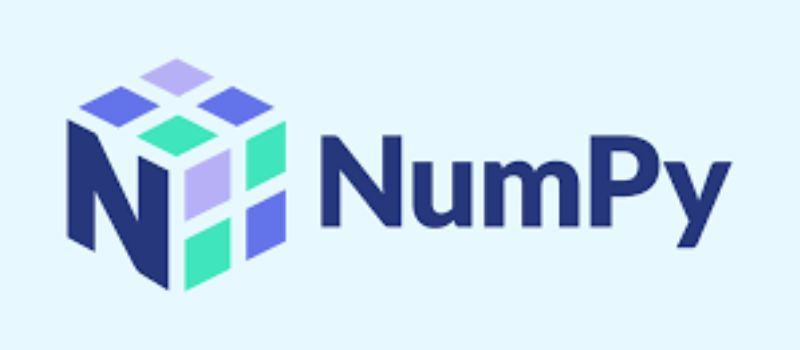
NumPy stands for “Numerical Python.” It is a powerful open-source numerical computing library for Python. NumPy enables efficient mathematical operations on large, multi-dimensional arrays and supports various mathematical and logical operations.
Pros:
- Numpy arrays consume less memory space. It provides better runtime speed when compared with similar data structures in Python.
- Numpy supports some specific scientific functions, such as linear algebra.
- Because of their similar functionalities, it is an excellent substitute for MATLAB, OCTAVE, etc.
- NumPy is perfect for data analysis.
Cons:
- Numpy is not suitable for large-scale distributed computing
- More efficient than some other libraries.
- Numpy does not support GPU acceleration, which can be a limitation for some applications.
3. Matplotlib
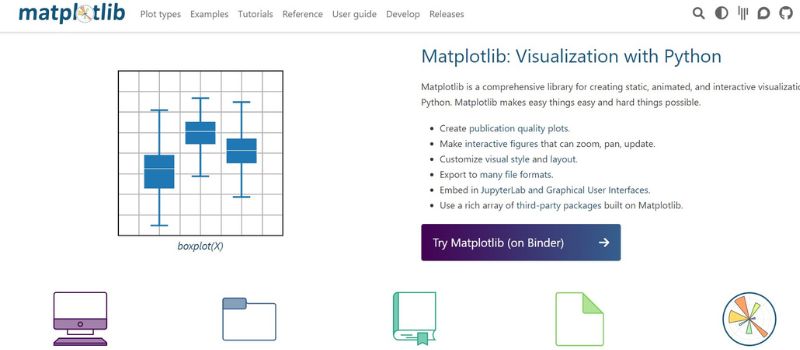
Matplotlib is an open-source data visualization library for Python. It provides comprehensive functions and tools for creating high-quality static, animated, and interactive visualizations. Matplotlib allows data scientists, researchers, and developers to represent their data in various forms, such as line plots, scatter plots, bar plots, histograms, pie charts, and more.
Pros:
- Versatile and accessible
- Customizable
- Good documentation
- A universal tool that plugs into many backends
Cons:
- Steep learning curve
- Users need to learn Python programming before using the tool
- Users need to understand the syntax of Matplotlib, which is based on the software, MATLAB
4. Scikit Learn

Scikit-learn is a machine learning tool built on top of other scientific Python libraries like NumPy, SciPy, and Matplotlib. It provides a comprehensive suite of tools and algorithms for various machine learning tasks, including classification, regression, clustering, dimensionality reduction, and model selection.
Pros:
- User-friendly and handy tool that can do multiple things such as predicting customer behavior, and creating neuroimage.
- It is easy and free to use.
- The contributor and the international online community update the Scikit Learn library.
- Scikit learn library provides the API documentation for the user who wants to integrate the algorithm with his platform.
- Extensive documentation
Cons:
- Scikit-learn is not the best choice for in-depth learning.
5. TensorFlow
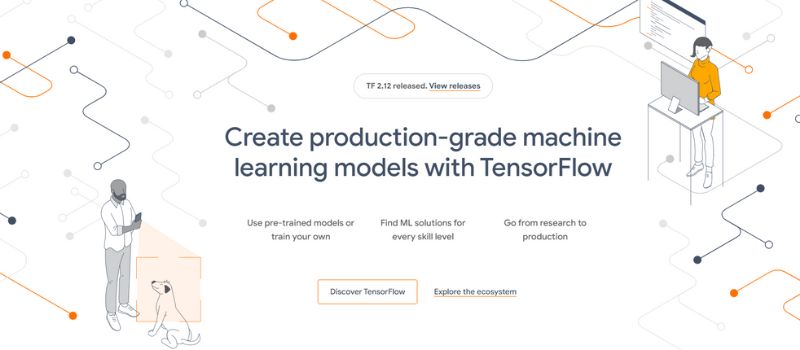
TensorFlow is another machine learning library for Python. It works with NumPy, SciPy, and Matplotlib. It’s an open-source machine learning framework developed by Google. In addition, it facilitates the development and deployment of machine learning models, particularly neural networks.
Pros:
- Features various classification, regression, and clustering algorithms
- Models are trained and tested on different datasets than one used for preparing data using a train-test split
- Implements the non-neural net-based algorithm
Cons:
- TensorFlow’s frequent updates increase the overhead for users to install and bind it with the existing system.
- It uses homonyms with varying meanings, making it inconsistent with its usability.
- TensorFlow has low speed compared with other machine learning tools.
- It offers little support for Windows Operating System users.
6. PyTorch

One of the critical features of PyTorch is its dynamic computational graph, which allows users to define and modify models on-the-fly during runtime. This dynamic nature makes experimenting with different architectures, control flow, and algorithms easy, making PyTorch particularly popular among researchers and developers.
Pros:
- Cloud support
- Considered as NumPy extension of GPUs
- Easy to debug and understand
Cons:
- It was released in 2016, so it’s new compared to others and has fewer users.
- Absence of monitoring and visualization tools
- Smaller developer community is small compared to other frameworks.
7. NLTK
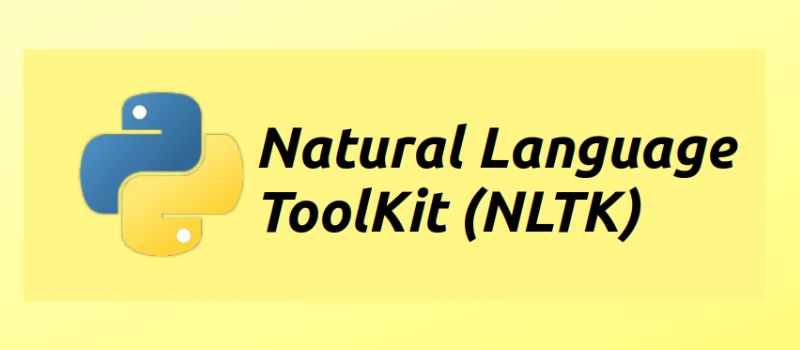
NLTK Stands for Natural Language Toolkit. It is used to work with human language data. NTLK’s libraries and programs for symbolic and statistical natural language processing for English written in Python.
Pros:
- NLTK fully supports the English language
- It consists of algorithms such as tokenizing, parts of speech, stemming, topic segmentation
- Efficient at analyzing large datasets
Cons:
- NLTK can be clunky and slow if you need to familiarize yourself with NLP.
- It’s more academic because of its origins in teaching and research
- It may not provide out-of-the-box thinking for some innovative web processes and startup needs.
8. Tableau
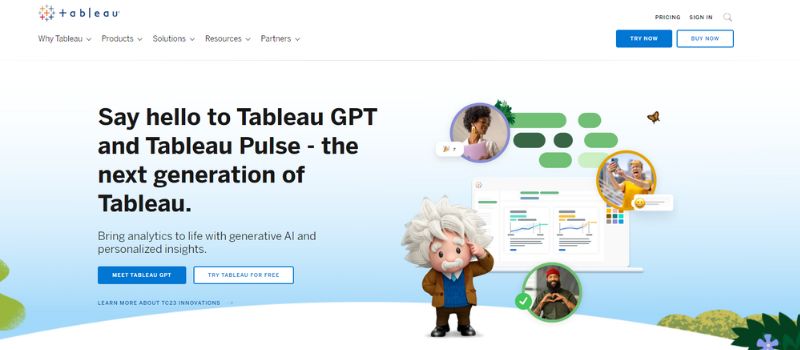
Tableau is a popular data visualization and business intelligence software that allows users to explore and analyze data through interactive visualizations, dashboards, and reports. It provides a user-friendly interface and drag-and-drop approach to create visually appealing and interactive visualizations without extensive coding or programming knowledge.
With Tableau, users can connect to various data sources, including spreadsheets, databases, cloud services, and big data platforms. The software supports multiple data types and offers powerful data blending and transformation capabilities, enabling users to clean, combine, and reshape data for analysis.
Pros:
- Provides beautiful dashboards and reports
- Automate Reporting
- Perform ETL(Explore, Transform, and Load) operations quickly
Cons:
- Tableau is expensive.
- The steeper learning curve for advanced features
- Performance limitations in large datasets.
- Limited statistical analysis and modeling
- Limited customization options
Conclusion
The machine learning tools discussed in this article offer valuable resources and capabilities for data scientists. Each agency brings unique strengths and features, empowering users to efficiently tackle complex data analysis, model training, and predictive tasks.
You may like
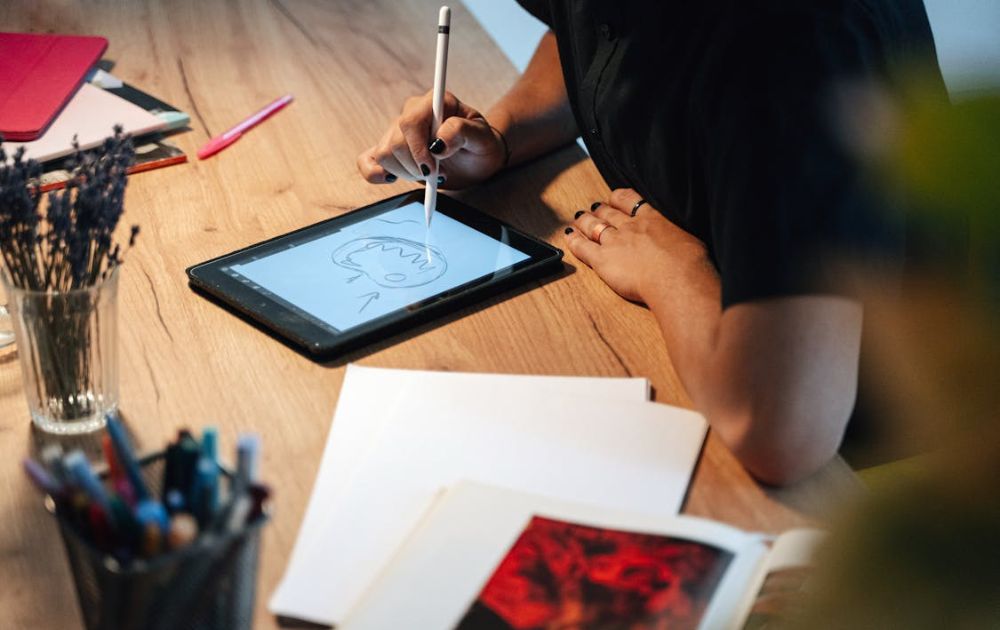
Graphic design subscription services like No Limit Creatives are popular among small businesses to get quick and quality designs. However, just like any other platform, it has its downsides. So, if you’re looking for No Limit Creatives alternatives, here is a list we made to help make the job easier for you.
Penji — Best Overall Alternative

If you’re looking for a reliable graphic service from start to finish, Penji is a great alternative. Penji significantly improves upon the things that No Limit Creatives lacks in comparison — turnaround time, user dashboard experience, and offers a consistent designer who helps your brand over time.
Why it Stands Out:
The biggest issues with No Limit Creatives are slow turnaround times and designs that lack brand cohesion. With Penji, you get consistent communication, consistent pricing, and over 120 design types without all the hassle.
Pros:
- Quick turnaround time (24-48 hours)
- A designer learns your style
- Easy user dashboard
- Consistent monthly pricing with no hidden fees
- 120+ types of designs (ads, branding, web, social, and more)
Cons:
- No communication through chatting with the designers
- No video/animation capability
GraphicsZoo — Best for Revision and Version Tracking
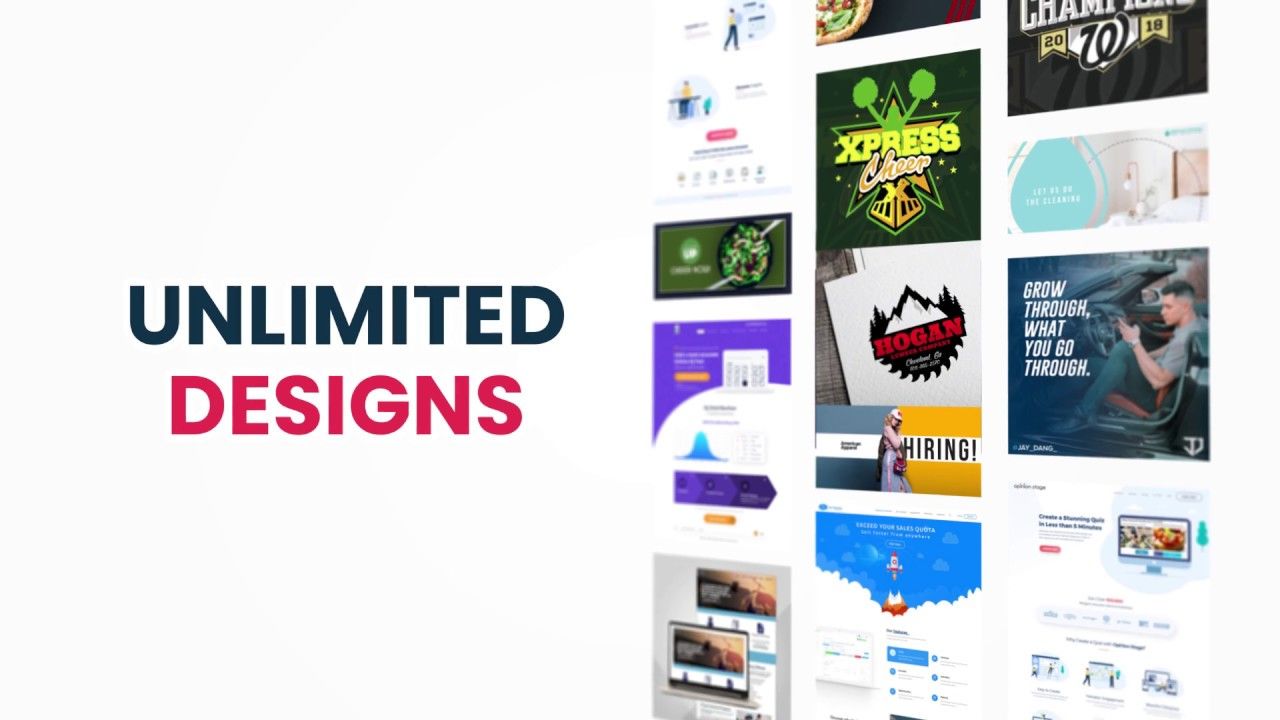
GraphicsZoo is a good alternative if you want more say in your revisions and need brand consistency across the board. GraphicsZoo can help with easy version tracking, making team collaboration simple.
Why it Stands Out:
If you’re struggling to get changes made or keep things on brand, GraphicsZoo gives you the tools necessary to do so.
Pros:
- Tracks versions and revisions in detail
- Team collaboration made easy
- Dedicated Design Team
Cons:
- Turnaround may vary depending on order
- The interface could be more modern
Content Beta — Best for SaaS and Tech Brands
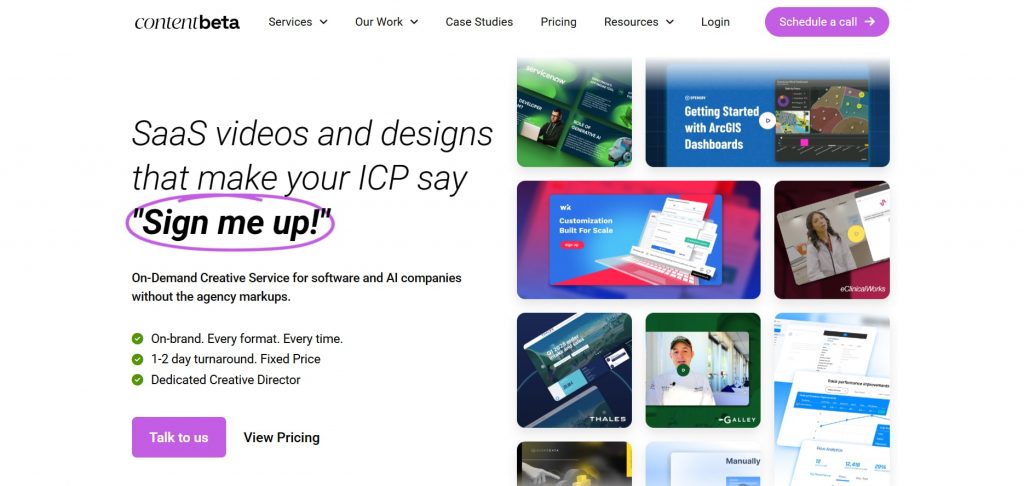
If you’re a software or tech company that needs more modern design visual offerings like product explainer videos, UI design mockups, and onboarding videos, then Content Beta works best for you. Unlike No Limit Creatives, which primarily focuses on graphics, Content Beta specializes in design and video.
Why it Stands Out:
If you’re working on product videos, app UI, or anything tech-related, this is the choice for specialized help.
Pros:
- UI/UX combined services
- Great for explainer videos of products
- Video/design in one package
Cons:
- Non-ideal for basic branding or print materials
- Could be costly for smaller teams
SmartSites — Best for Marketing + Design Services
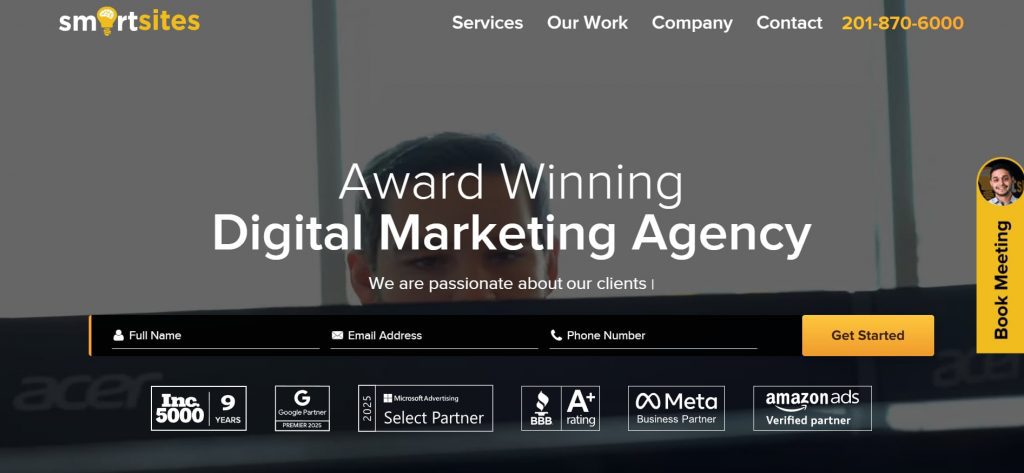
SmartSites is a marketing agency first and foremost. They provide SEO/PPC/web services along with graphic design so if you’re looking for heavy assistance in creative strategies as well as marketing brands and messaging, SmartSites is a suitable match.
Why it Stands Out:
If you want design solutions with tangible marketing results, then SmartSites provides you the growth potential to back it up.
Pros:
- Agency full-service: design/se0/PPC/web solutions
- Good for branding long haul
- A lot of strategic thinking help
Cons:
- Not unlimited graphic designs subscription program
- Should avoid if you only need design work
Business
What’s the Best Graphic Design Service for Startups
Published
5 days agoon
October 30, 2025By
Flore
TLDR: Penji is the best graphic design service for startups because you get unlimited designs, 24-48 hour turnarounds, and flexible pricing that won’t drain your budget. Unlike premium agencies or inconsistent freelancers, Penji scales with your startup.
The best graphic design service for startups is Penji. For $499/month, get unlimited design requests delivered in 24-48 hours with a dedicated team that understands startup urgency. No contracts, no per-project fees, just reliable design support.
Startups burn through design work fast. One week, you need social posts. Next week, you’re updating your pitch deck. Then suddenly, you need a one-pager for investors. Freelancers cost too much per project, and full-time designers? Not in the budget yet. Here’s the graphic design service for startups that comes in, giving you unlimited work for predictable monthly costs.
Top Design Services Startups Actually Use
1. Penji
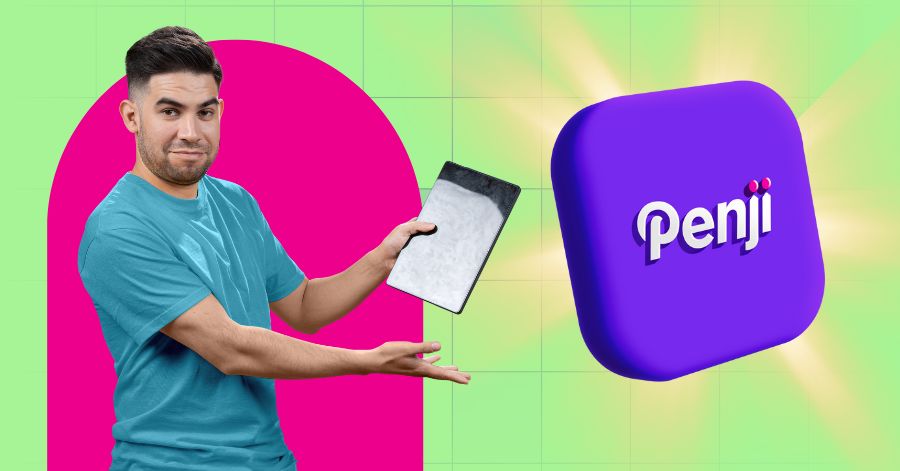
When you’re hunting for the best graphic design service for startups, you need speed, variety, and affordability all at once. Penji nails all three. Their design as a service platform gives you unlimited designs for $499/month with 24-48 hour turnarounds.
Why Penji works so well for startups:
They handle everything. Logos, pitch decks, social campaigns, you name it. No per-project charges. Your monthly rate stays flat whether you submit two requests or twenty.
Your dedicated team at Penji learns your brand fast. They remember your preferences for future projects instead of treating every request like the first time.
The creative support scales from simple graphics to complete brand guides. You don’t get forced into higher pricing tiers when your needs grow.
No contracts. You can pause when cash is tight and restart when you’re ready. Perfect for unpredictable startup budgets.
Startups choose Penji when they need graphic design services that match their pace without the agency price tag.
2. Superside
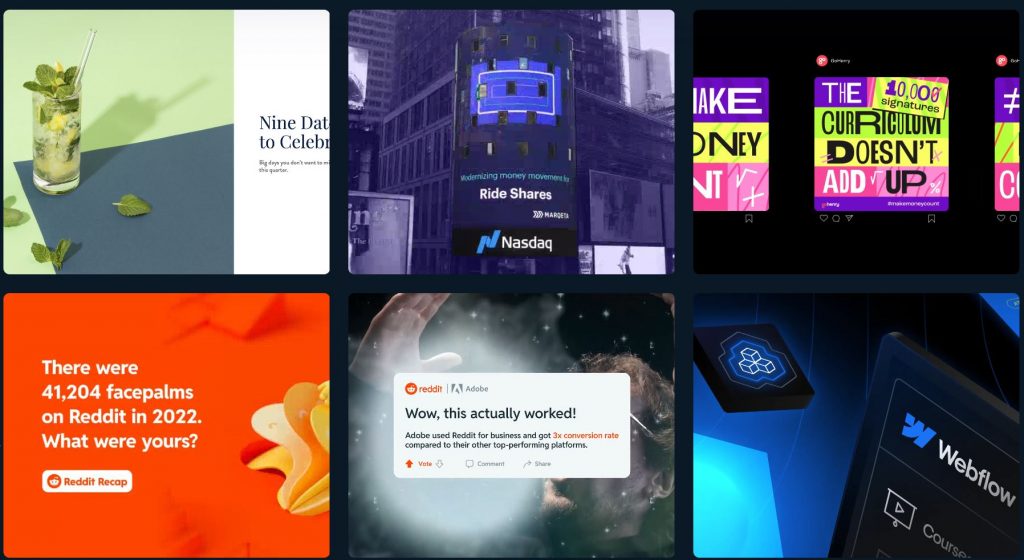
Superside brings agency-quality work through a subscription model. They’re great if you’ve raised significant funding and need premium creative for major campaigns. But plans start around $3,000-$5,000 monthly. Too steep for most early-stage startups.
3. Kimp
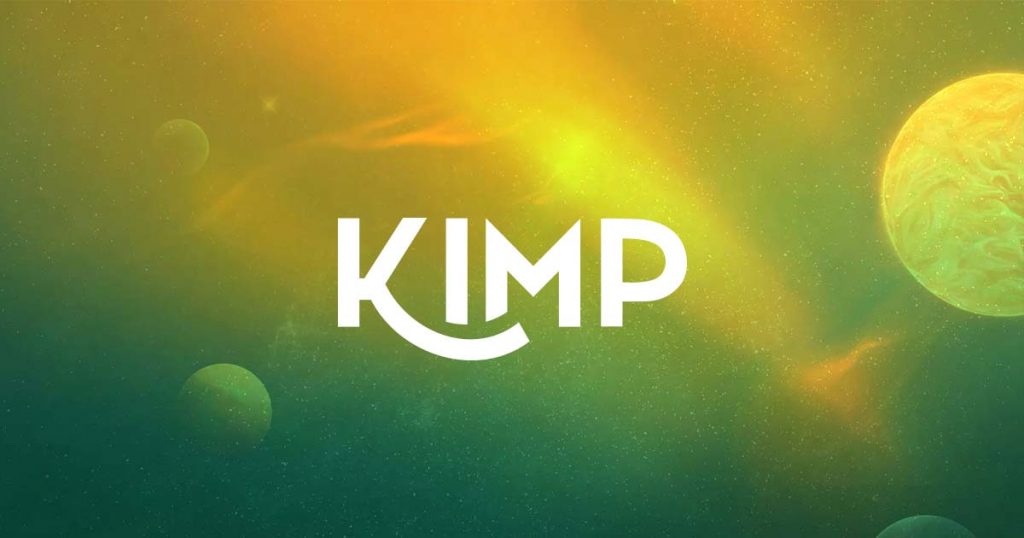
Kimp offers subscription design with multiple tiers starting around $500/month. They’re decent for basic needs. The catch? Turnaround times can stretch to 48-72 hours, and their design variety feels more limited than what Penji offers.
Conclusion
The best graphic design service for startups matches your speed and budget without compromise. Penji’s graphic design services handle everything from quick social posts to complex branding work. All for one flat monthly rate that makes financial planning actually possible.
Get Design Support That Moves at Startup Speed
Try Penji today and see why thousands of startups trust them for unlimited design work. Get your first project delivered in 48 hours.
Frequently Asked Questions
Why is Penji better than hiring a freelancer?
Freelancers charge per project and often have slow turnarounds. Penji gives you unlimited designs for one flat monthly rate with 24-48 hour delivery. No chasing invoices or waiting for availability.
How much does Penji cost compared to other services?
Penji starts at $499/month for unlimited designs. Superside costs $3,000-$5,000 monthly. Quality freelancers charge $100-$200 per project, which adds up fast when you’re launching.
Can I get revisions with Penji?
Yes. Unlimited revisions are included in your monthly subscription. Keep requesting changes until the design is exactly what you need.
Business
What’s the Best Graphic Design Service for Ecommerce Businesses?
Published
5 days agoon
October 29, 2025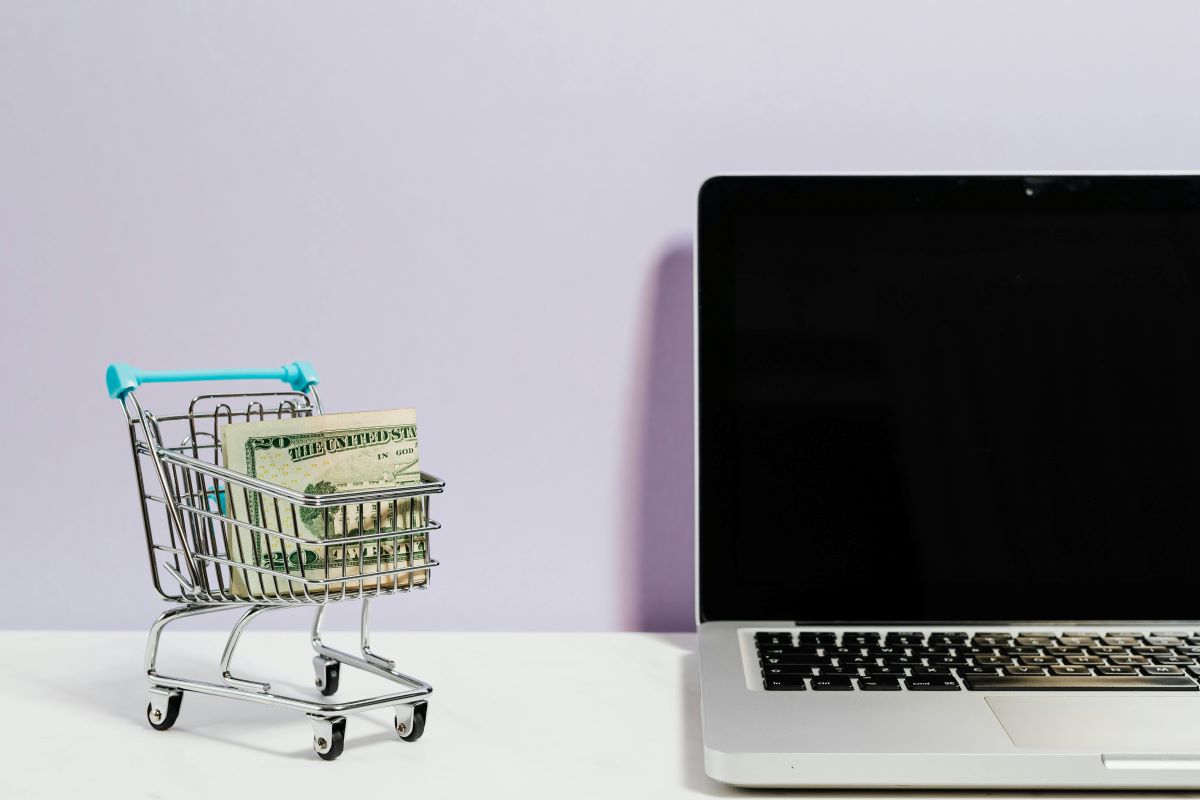
Graphic design is a huge part of managing an ecommerce business. It attracts prospects and website visitors, builds a strong brand identity, and establishes authority and credibility. If you want your brand to possess all these, you need to explore these five best graphic design services for e-commerce businesses:
Penji

A leading name in the graphic design subscription landscape, Penji offers unlimited graphic design and revisions for a flat monthly rate. This allows ecommerce businesses to get all the landing pages, ad creatives, product packaging, and other visuals they need without breaking the bank. Penji also offers a quick turnaround time of 24 to 48 hours, making it ideal for multiple product launches or regular email campaigns.
Flocksy
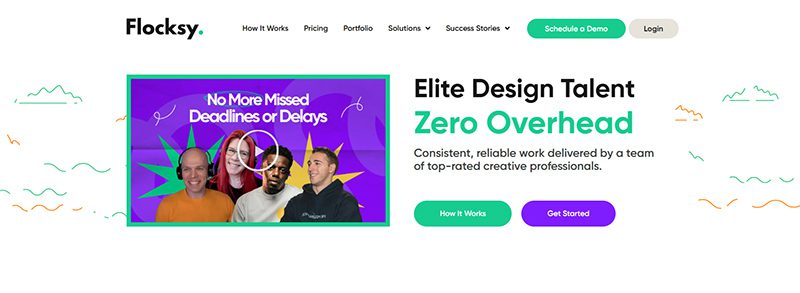
Boasting a team of designers, writers, and video editors, Flocky is an excellent option for ecommerce businesses looking for a reliable design partner. Like Penji, it delivers within 24 to 48 hours with fixed-rate pricing plans. Also included in the plans are unlimited revisions, so you can get the exact designs you need.
ManyPixels
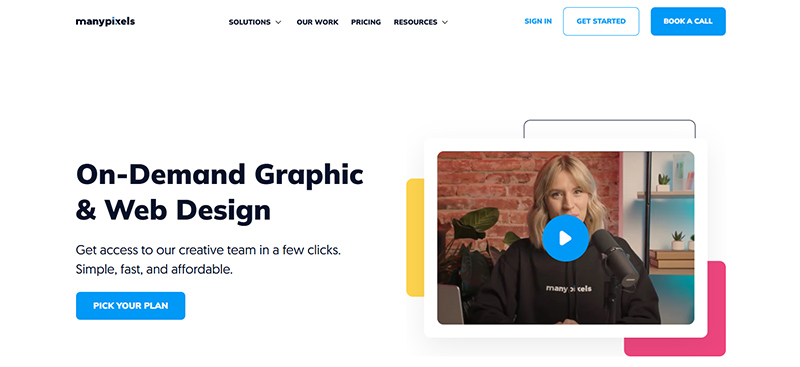
Another graphic design subscription platform that’s built for ecommerce businesses, ManyPixels lets you send as many design requests as you can in a month. Its higher-tier plans match you with a dedicated designer to provide consistent visual assets for your online store.
Duck.Design
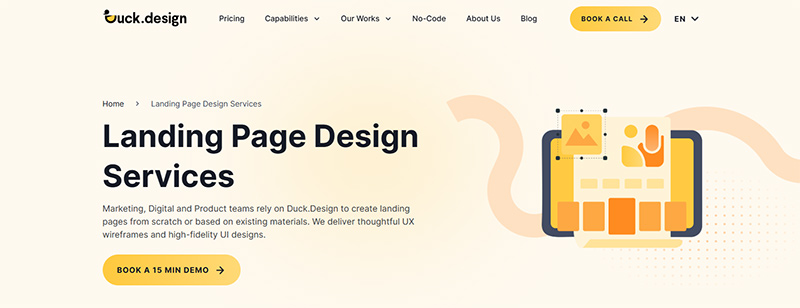
Whether your business is on Amazon, Shopify, or DTC (direct-to-consumer), Duck.Design is an excellent graphic design service for ecommerce businesses. It also offers unlimited graphic design services for flat monthly rates. Like ManyPixels and Penji, it delivers in 1 to 2 business days.
DotYeti

A rising start in the unlimited graphic design landscape, DotYeti is well-suited for ecommerce businesses looking for quality, fast, and affordable designs. You can send requests for infographics, packaging design, landing page designs, ad creatives, and many more.

What’s the Best Merchandise Design Company?

Top 10 Tablets to Use in 2025

What’s the Best No Limit Creatives Alternatives?

What’s the Best Graphic Design Service for Startups

What’s the Best Graphic Design Service for Ecommerce Businesses?

What’s the Best Fiverr Alternatives?

What’s the Best Superside Alternatives today?

Top 10 Tablets to Use in 2025

What’s the Best Superside Alternatives today?

What are the Best Canva Alternatives for Designers and Marketers?

What’s the Best Fiverr Alternatives?

What’s the Best Graphic Design Service for Startups

What’s the Best Graphic Design Service for Ecommerce Businesses?


